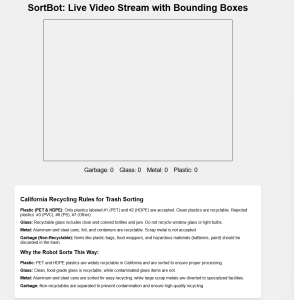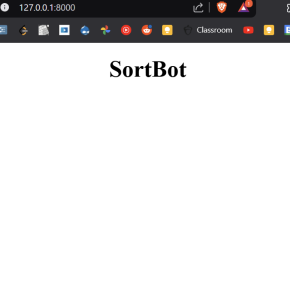What are the most significant risks that could jeopardize the success of the project? How are these risks being managed? What contingency plans are ready?
The most significant risk we could face right would be a poor design for the z-axis end effector. Currently, we are exploring (and have placed an order for) a couple of suction cup end effector and pressurized mechanisms to enable pick up and drop off. However, going forward, we need to be very careful as we are most likely going to depend on off-the-shelf components and the wait time to have these arrive is longer than we would like. In order to mitigate this risk we are going to place orders for these off-the-shelf parts if we have really thought hard about how these off-the-shelf components will integrated into the end effector. This way we can use our limited time more effectively. The main contingency plan would be to fail back on designing some of vacuum system to pick up and drop off items.
Were any changes made to the existing design of the system (requirements, block diagram, system spec, etc)? Why was this change necessary, what costs does the change incur, and how will these costs be mitigated going forward?
No major changes have been made yet.
Provide an updated schedule if changes have occurred.
No schedule changes have been made.
Part A was written by Alejandro, Part B was written by Teddy, and Part C was written by Ethan.
Part A:
With respect to public safety, SortBot helps in reducing the risk that human sorters take when interacting with trash inside trash processing facilities. Our robot reduces the risks of workers being cut by the trash they’re sorting and being exposed to harmful chemicals that could shorten their lives and livelihoods. Additionally, the reduction of manual labor the workers will have to do would also decrease the risk of musculoskeletal related injuries. On the aspect of welfare, our robot would allow workers to move from doing monotonous skilled labor to being more specialized workers. They would be exposed to less hazardous roles and would have more opportunities to advance their skill sets leading to career growth. Finally, our robot would improve the recycling rates of trash sorting facilities which would allow for a less polluted planet.
Part B:
With respect to social factors, SortBot would be able to help establish recycling in countries not just within, but outside the US. Currently, due to the costly and labor-intensive nature of recycling, many economically weaker countries do not have the infrastructure to implement recycling. However, SortBot will be able to reduce costs associated with recycling, making recycling feasible in the countries which cannot currently afford it.
Part C:
With consideration of economic factors, SortBot is made solely from off-the-shelf components that can easily be assembled together without requiring additional fancy tools or machinery. Most of the complexity of SortBot comes from the custom software in each module, however, this can easily be replicated or made entirely open sourced for people to use. There should be no difficulty in setting up a system to mass produce many SortBots as nothing “weird” is done during its assembly. SortBot is also easily to be distributed to waste management facilitates as none of SortBot’s components require any additional handling and operate for a long time before breakdown. SortBot simply needs a wall outlet. This plug-and-play nature was one of our major design goals with SortBot, both in price and easy installation (needing multiple additions to aid the integration of sort would be expensive).



